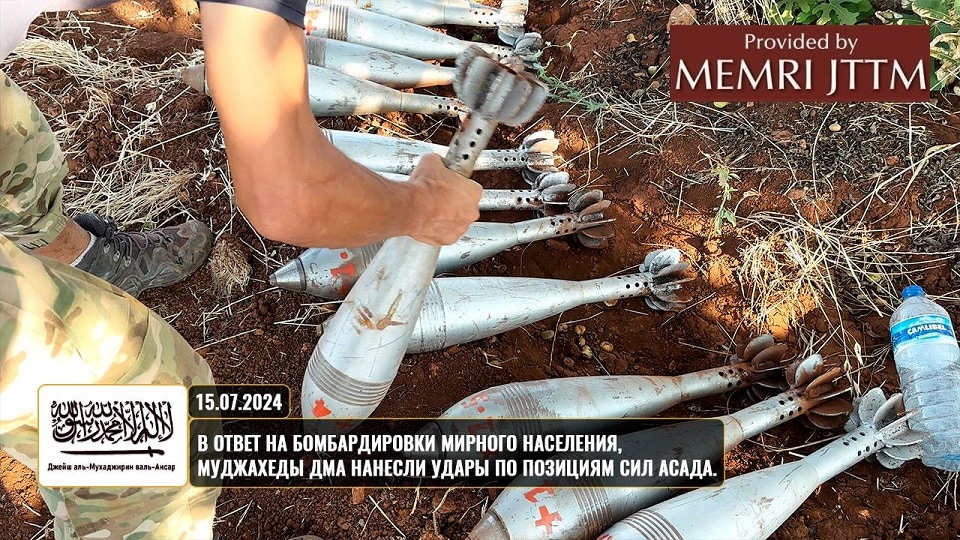The following report is now a complimentary offering from MEMRI's Jihad and Terrorism Threat Monitor (JTTM). For JTTM subscription information, click here.
On July 16, 2024, Jaysh Al-Muhajireen Wal-Ansar (JMA), a group of mujahideen from the Caucasus affiliated with Syrian jihadi group Hay'at Tahrir Al-Sham (HTS), released a photoset of fighters firing mortars and heavy machine gun-artillery at positions held by Syrian forces in northwestern Syria's Idlib-Aleppo region.[1]
Posted on the group's official channel on Telegram, the photos bear the caption: "In response to the bombing of civilians, the JMA mujahideen attacked the positions of Al-Assad's forces." Some photos depicting the targeted sites and areas are taken by camera drones.
The ongoing skirmishes across the fighting sectors with the forces of the Syrian regime and Iran-backed militias come in the context of JMA leadership statements stressing the significance of monitoring sentries to defend what they call "liberated" lands in the region.







On July 5, 2024, the JMA released a video in Russian titled: "Reward of Ribat [Guarding Sentries], An Ever-Flowing Charity," featuring a commander explaining, at length, the divine rewards Allah promises the mujahideen who strive in jihad and guard the Muslim frontlines.[2]
On July 12, 2024, JMA released a second video featuring a senior commander expounding on the benefits of Ribat – the rewards, he argues, outlast a fighter's life. He encourages others to adhere to jihad and its virtues.[3]
[1] Telegram, July 16, 2024.
[2] See MEMRI JTTM Report: Syria-Based Jihadi Group From The Caucasus Releases Russian-Language Video Exalting Members' Defense Of Sentries, Quest For Divine Reward, July 9, 2024.
[3] Telegram, July 12, 2024.
The full text of this post is available to subscribers.
Please login or register to request subscription information from MEMRI




